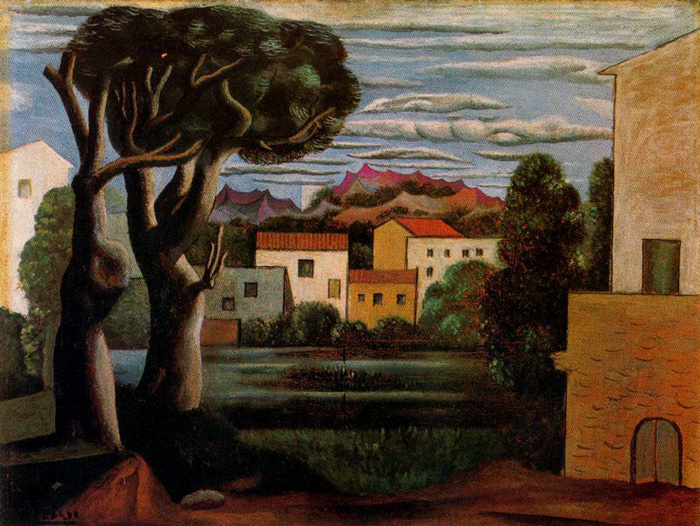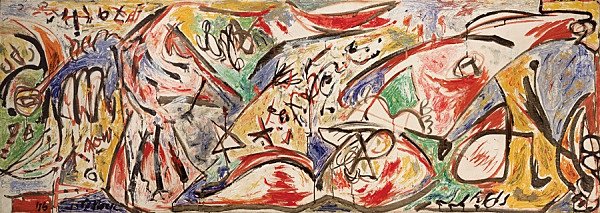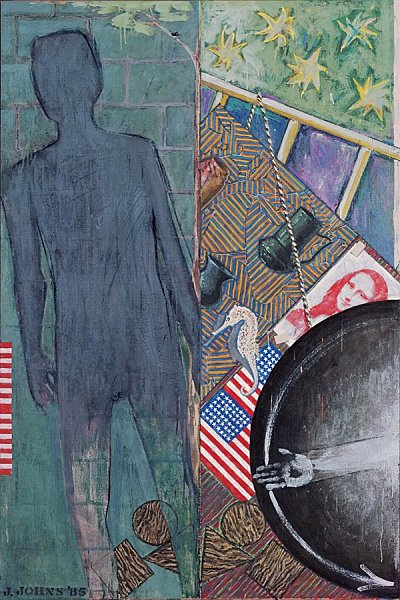Tuesday, August 7, 2012
PICASSO AND AMERICAN ARTISTS: Stuart Davis, Willem de Kooning, Arshile Gorky, Jasper Johns, Roy Lichtenstein, Jackson Pollock
Exhibition placed Picasso masterworks alongside art by Stuart Davis, Willem de Kooning, Arshile Gorky, Jasper Johns, Roy Lichtenstein, Jackson Pollock, David Smith, Max Weber, and others
Pablo Picasso Seated Woman with Wrist Watch, 1932 Roy Lichtenstein Girl with Beach Ball III, 1977
A landmark exhibition, ten years in the planning, Picasso and American Art celebrated Picasso’s dramatic impact on the course of 20th-century American art. Although Picasso never set foot in America, many of this country’s most important artists saw him as the central figure of modern art and defined their own achievements through their absorption or critique of his example.
Picasso and American Art focused on the nine American artists who have been most deeply engaged with Picasso’s work and who, in turn, have made the most significant contributions to the art of their time: Stuart Davis, Willem de Kooning, Arshile Gorky, John Graham, Jasper Johns, Roy Lichtenstein, Jackson Pollock, David Smith, and Max Weber. Picasso played a central role in the artistic development of each of these nine artists. In addition to these key figures, the exhibition included works by other American artists inspired by Picasso, among them Louise Bourgeois, Arthur Dove, Marsden Hartley, Lee Krasner, Claes Oldenburg, Man Ray, Andy Warhol, and Tom Wesselmann.
Picasso and American Art was organized by the Whitney Museum of American Art, where it ran from September 28, 2006, through January 28, 2007. The exhibition was guest curated by Michael FitzGerald, Associate Professor in the Department of Fine Arts at Trinity College, Connecticut, in association with Dana Miller, Associate Curator at the Whitney.
The exhibition gathered together specific Picasso works that were studied by the nine American artists whose works were featured alongside Picasso’s, illustrating how American artists used Picasso’s example to push the boundaries of their own work. It is the precise juxtapositions of these works—often the very first pairing of significantly related objects—that reveal Picasso’s farreaching effect on American art.
“The intense involvement of American artists with Picasso’s work was at the center of a fundamental transformation in American art during the 20th century,” said guest curator Michael FitzGerald. “Picasso, more than any other artist, became the chief figure against whom Americans measured their achievements.”
Picasso and American Artt had historical links with the Whitney’s own past, going back to the years before the museum was established. In 1923, the Whitney Studio Club, a predecessor to the Whitney Museum and an important venue for the presentation of both European and American art, held one of the earliest Picasso exhibitions in the United States, Recent Paintings by Pablo Picasso and Negro Sculpture.
>Picasso and American Art reassembled many of the Picasso works from the 1923 show. The origins of Picasso and American Art lie in a 1995 Lobby Gallery exhibition at the Whitney. Entitled Picassoid, this drawing exhibition was co-organized by Michael FitzGerald and Adam D. Weinberg, then curator of the Whitney’s permanent collection, and now the Museum’s director.
The majority of the approximately 165 objects in the Whitney presentation of the exhibition were paintings and drawings. A small number of sculptures, prints, and photographs were also featured. The exhibition included nearly 40 works by Picasso. The selection of American artists was determined in part by the decision to focus only on artists who took up Picasso’s art before his death in 1973.
Rarely Seen Works
Among the works in
Picasso and American Art that had never before been exhibited publicly in this country were Picasso’s Still Life (1908); Louise Bourgeois’s Untitled (1940) and Untitled (1941); Jasper Johns’s paintings After Picasso (1998), Pyre (2003),
and Pyre II (2003), as well as several drawings that Johns lent.
Many of the essential Picassos came from foreign collections and gave US audiences exposure to significant works that have not been seen in the US for decades. Among these are Picasso’s Bar-Table with Musical Instruments and Fruit Bowl (c. 1913), Still Life with Bunch of Grapes (1914),
Landscape with Dead and Live Trees (1919), and Minotaur Moving (1936).
Pablo Picasso, Femme Assise (Seated Woman), 1927; Collection Art Gallery of Ontario, Toronto, purchase, with assistance from the Women's Committee and anonymous contributions, 1964; © 2006 Estate of Pablo Picasso/Artists Rights Society (ARS), New York; Photo: Carlo Catenazzi, Art Gallery of Ontario
Pablo Picasso, Bathers with Beach Ball, 1928,
Pablo Picasso, Bullfight, 1934 oil on canvas 13 x 16-1/8 in. Philadelphia Museum of Art, Gift of Henry P. McIlhenny, 1957 (c) 2006 Estate of Pablo Picasso/Artists Rights Society (ARS), New York
Roy Lichtenstein, Femme au Chapeau, 1962 © Estate of Roy Lichtenstein
Jackson Pollack, The Water Bull, c. 1946 oil on canvas 30-1/8 x 83-7/8 in. (76.5 x 215.6 cm) Stedelijk Museum, Amsterdam © 2006 Pollock-Krasner Foundation/Artists Rights Society (ARS)
Jasper Johns, Summer, 1985 encaustic on canvas 75 x 50 in. (190.5 x 127 cm) The Museum of Modern Art, New York, Gift of Philip Johnson, 1998 © Jasper Johns/Licensed by VAGA, New York, N.Y. Digital Image © The Museum of Modern Art/Licensed by SCALA/Art Resource, New York More images here
Travel Following its showing at the Whitney, Picasso and American Art traveled to the San Francisco Museum of Modern Art from February 25 to May 28, 2007, and to the Walker Art Center in Minneapolis from June 17 to September 9, 2007.
Catalogue
Co-published by the Whitney and Yale University Press, the 368-page exhibition catalogue includes a scholarly monograph by Michael FitzGerald and approximately 300 illustrations, as well as a thorough chronology that documents the accessibility of Picasso’s work in the United States through exhibitions, collections, and publications. Based on extensive research, the catalogue provides valuable new insights into the ways that Picasso’s art affected generations of American artists and the ways in which America helped shape Picasso’s reputation.









